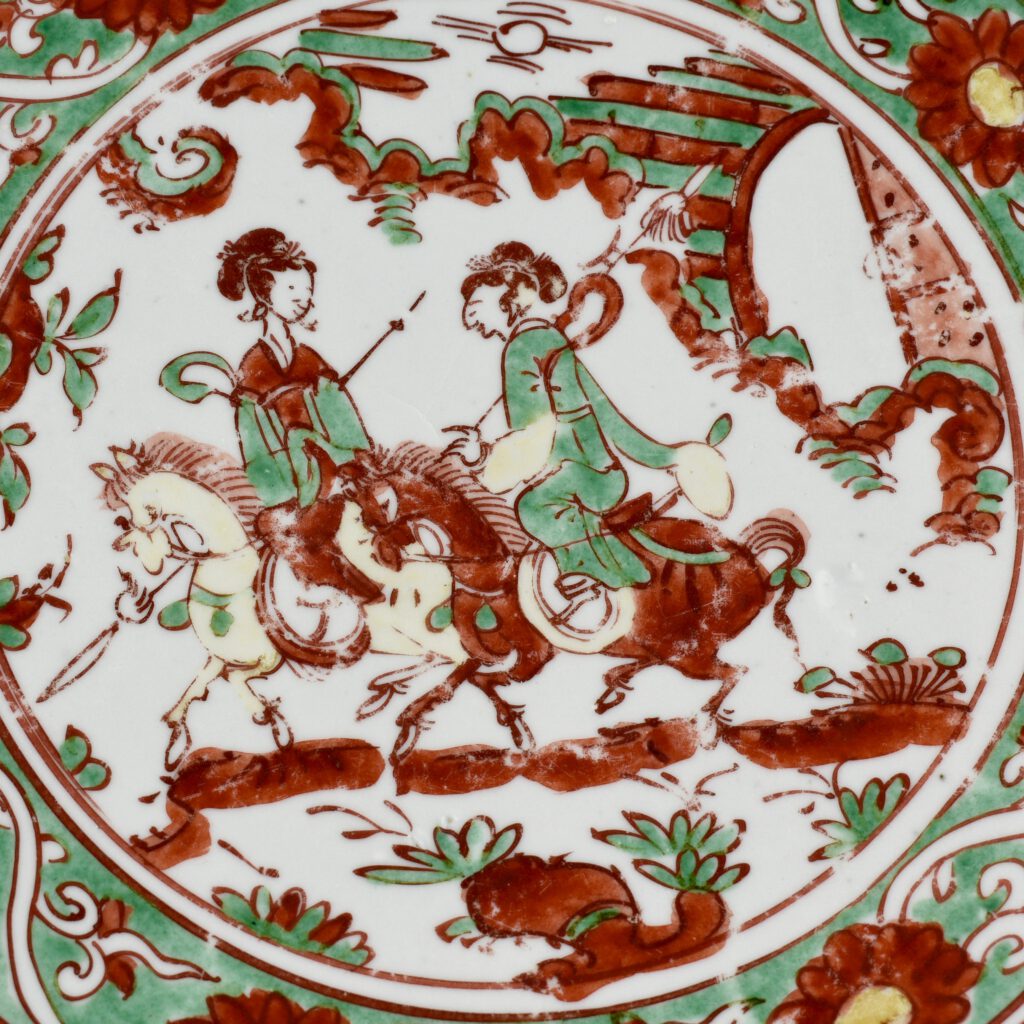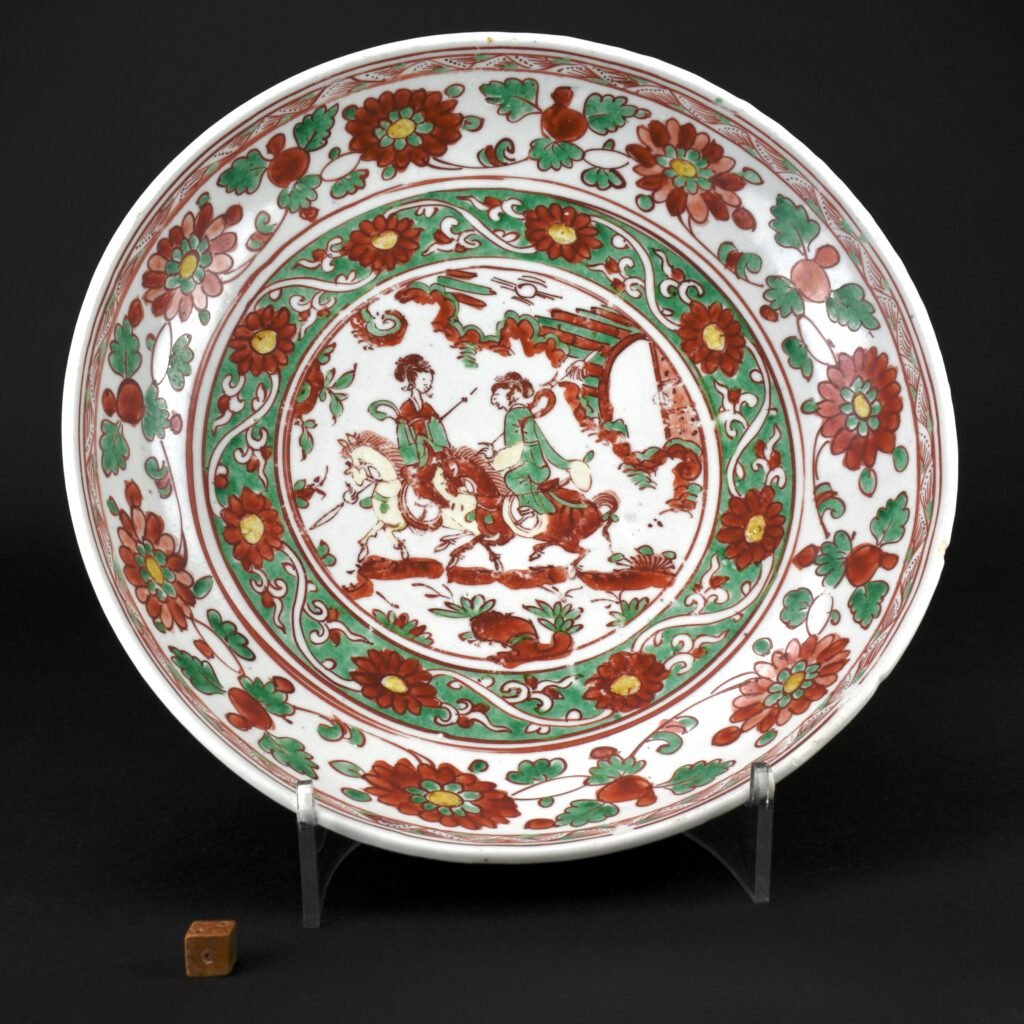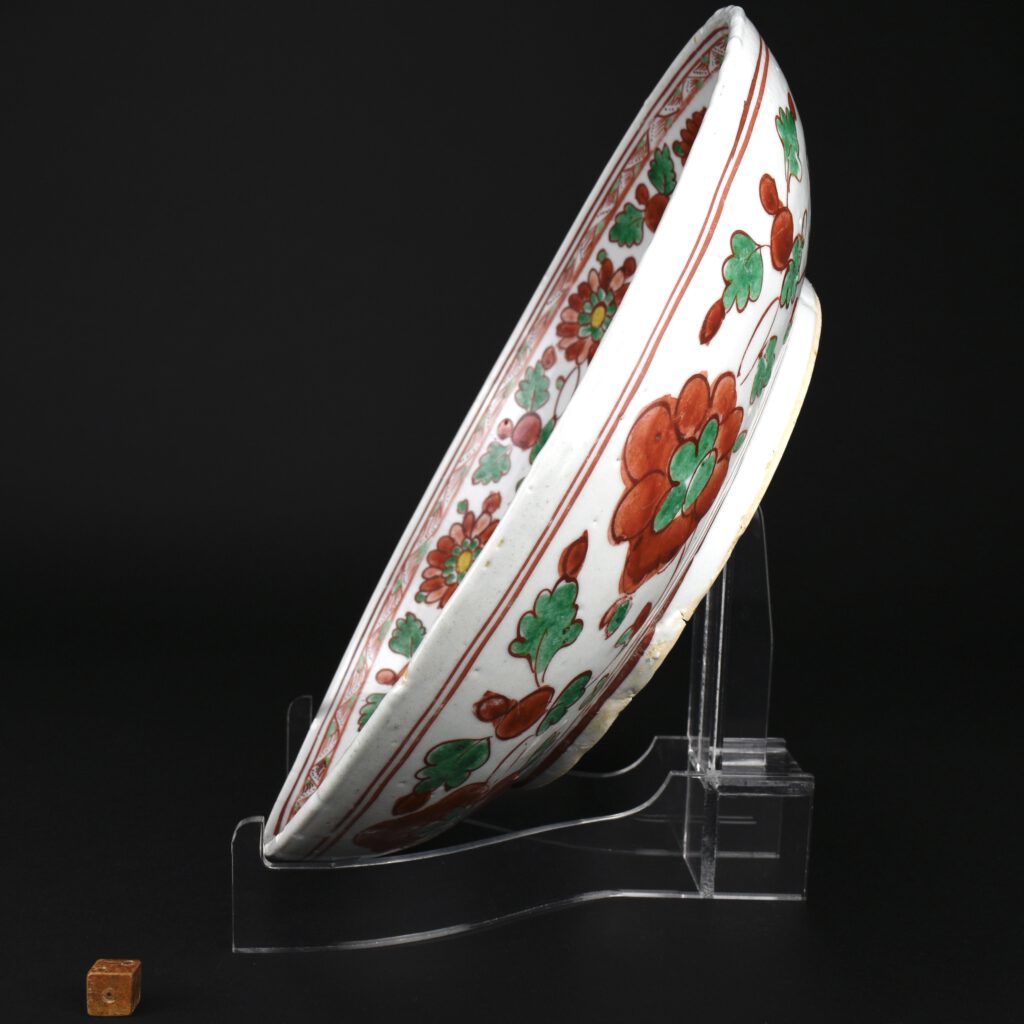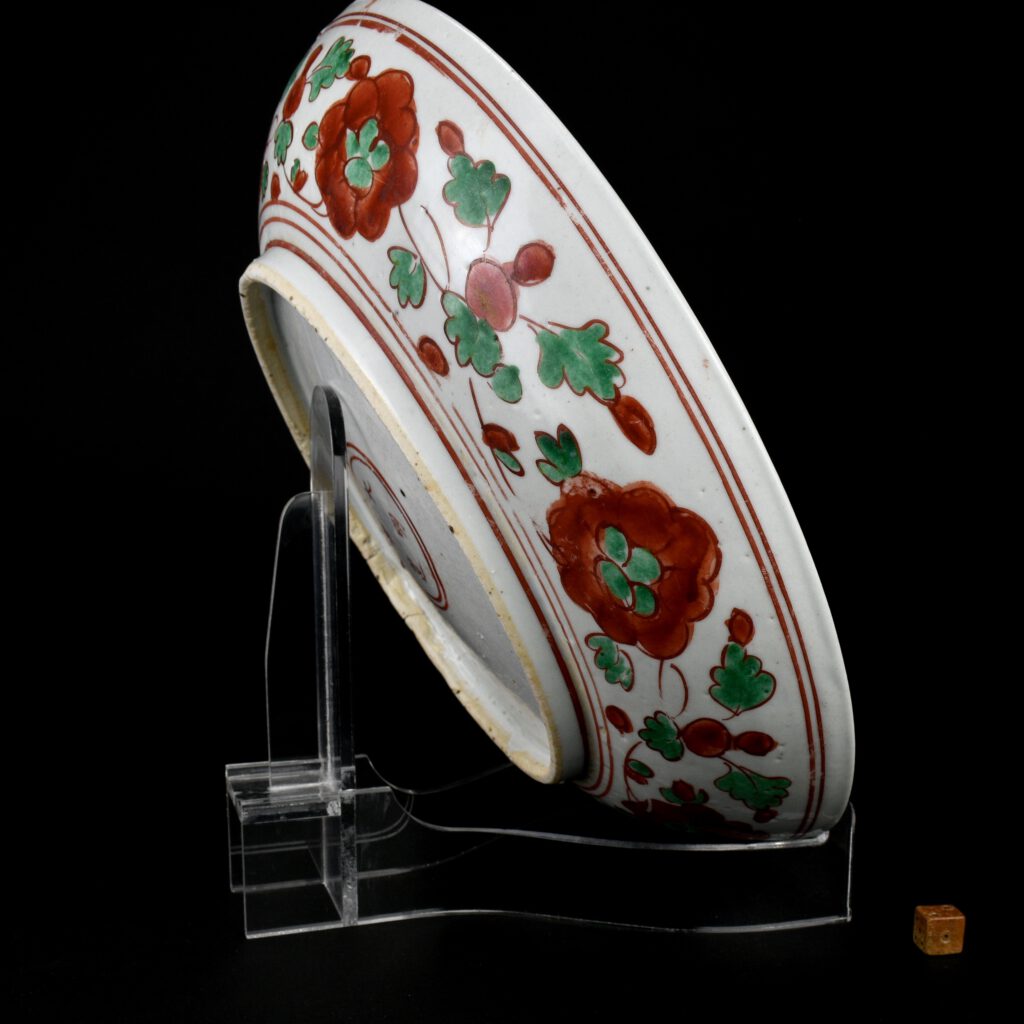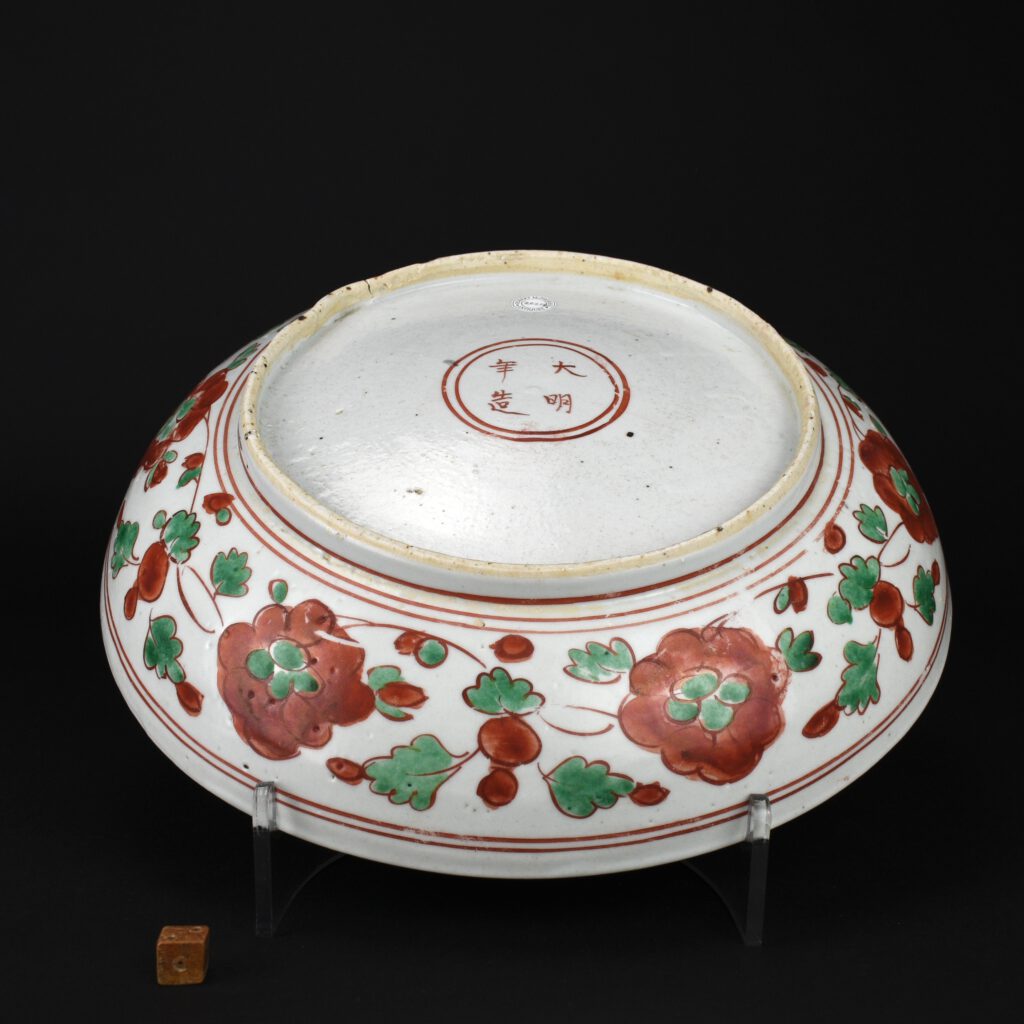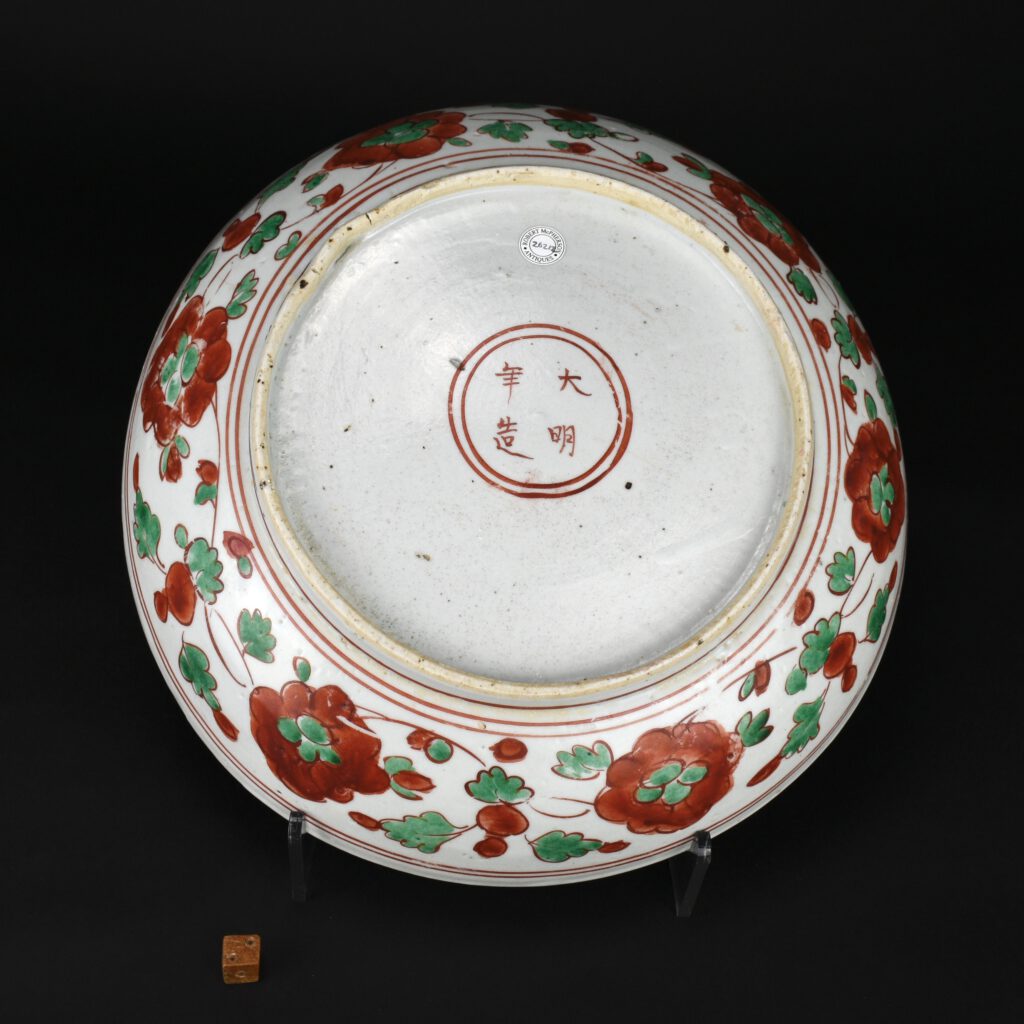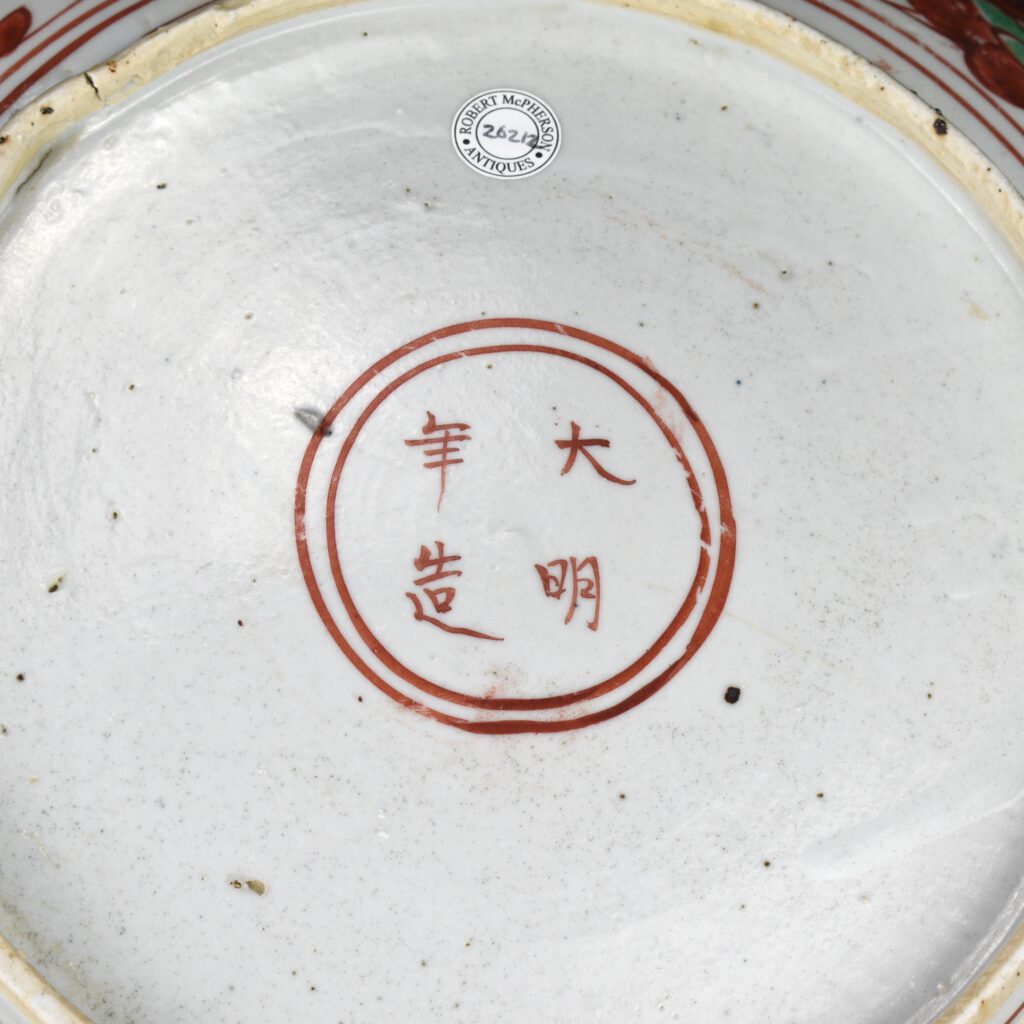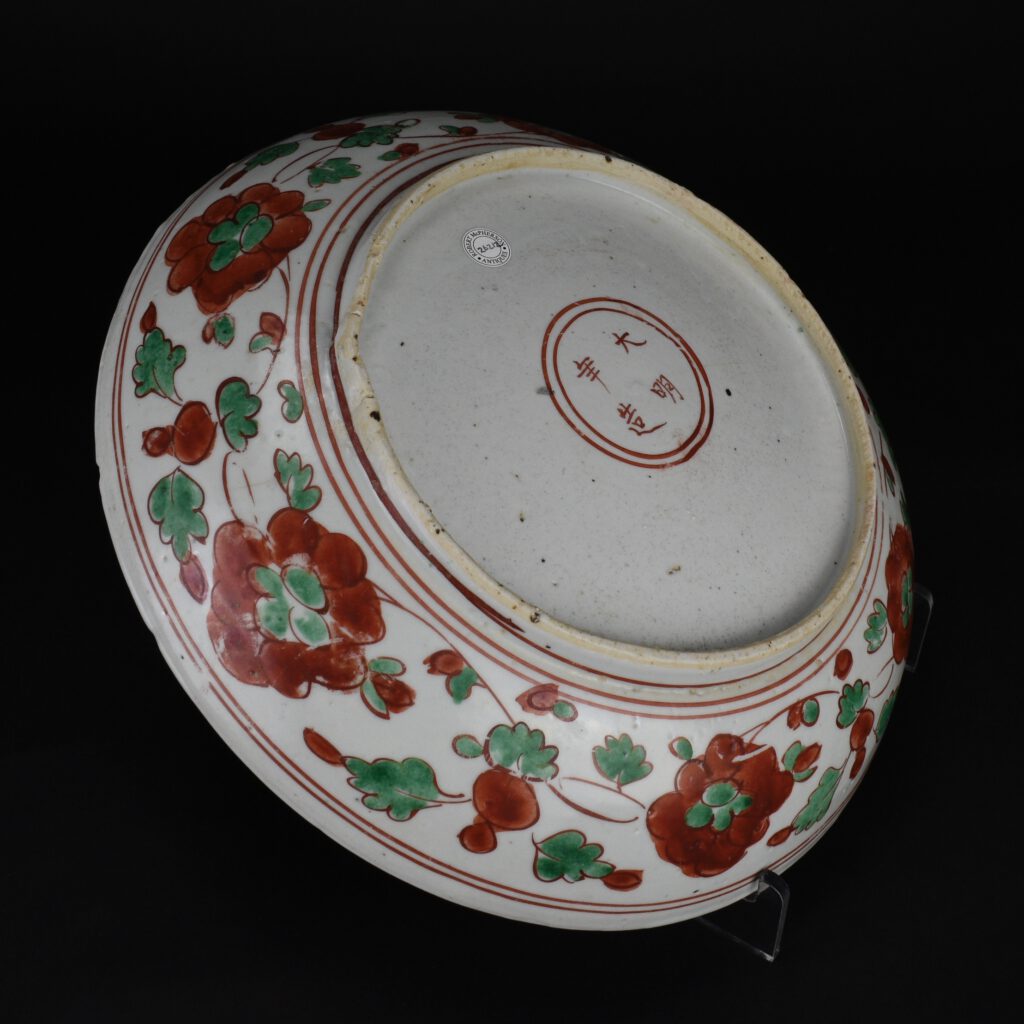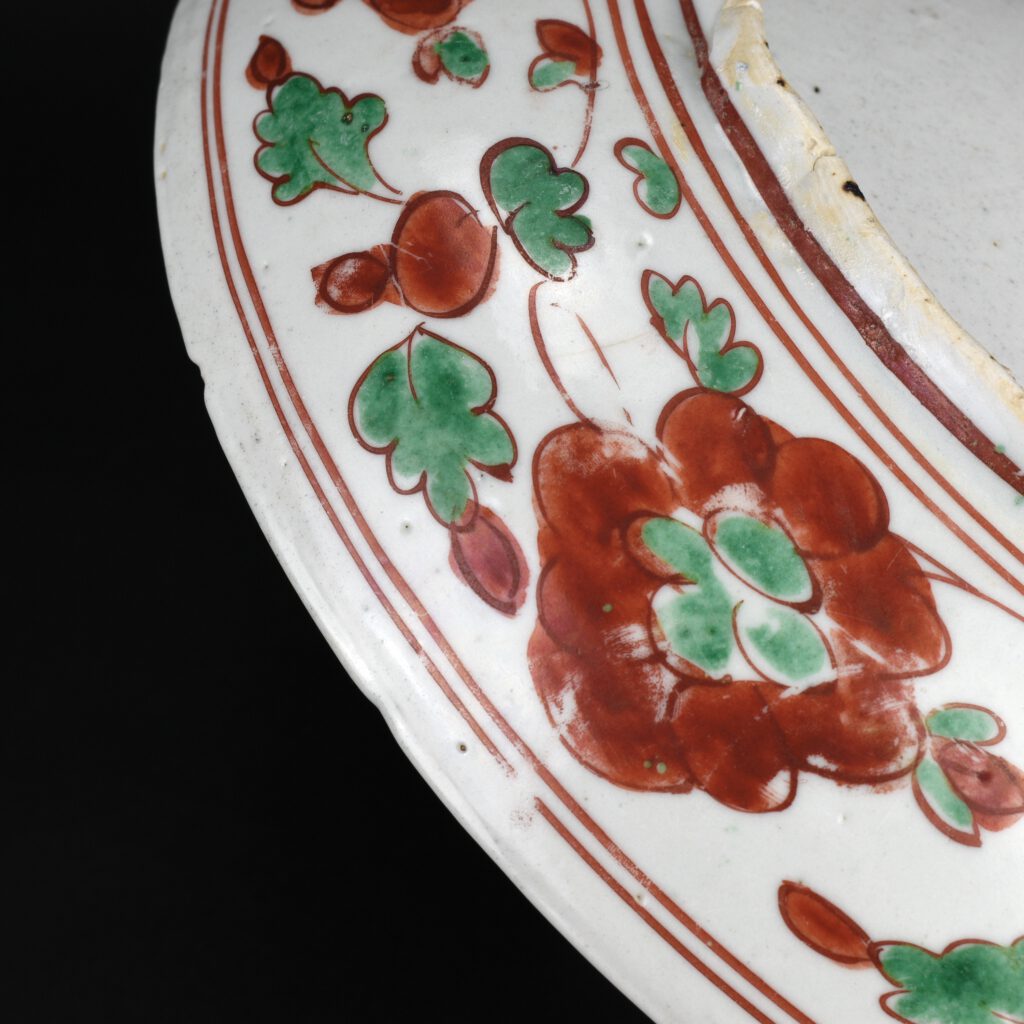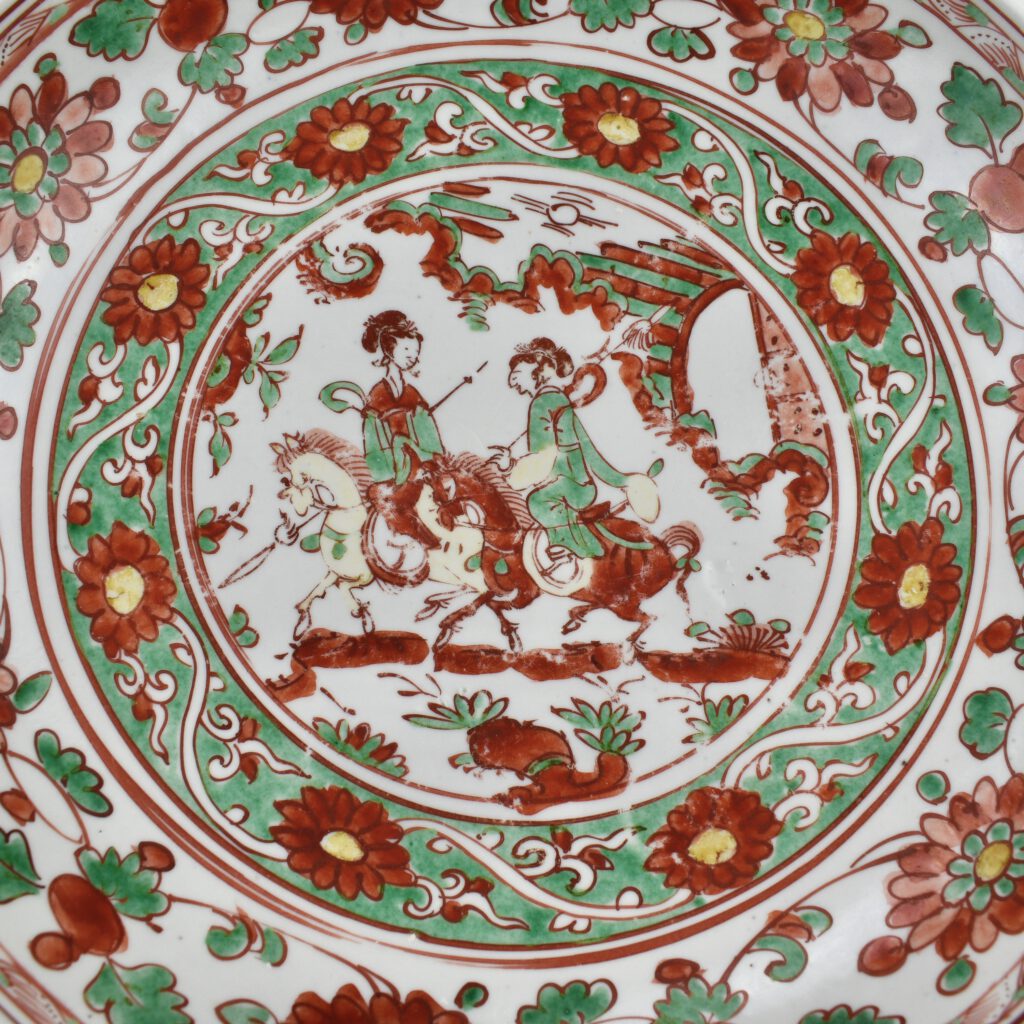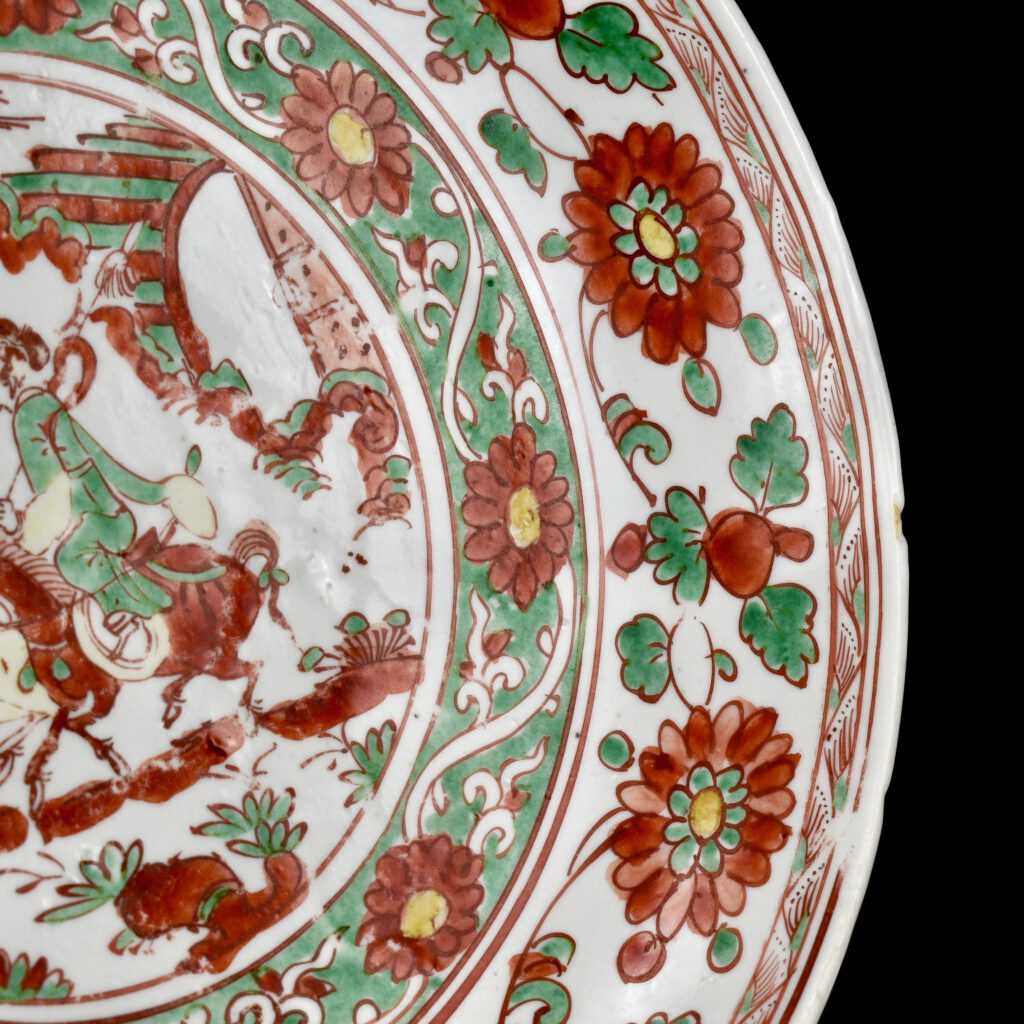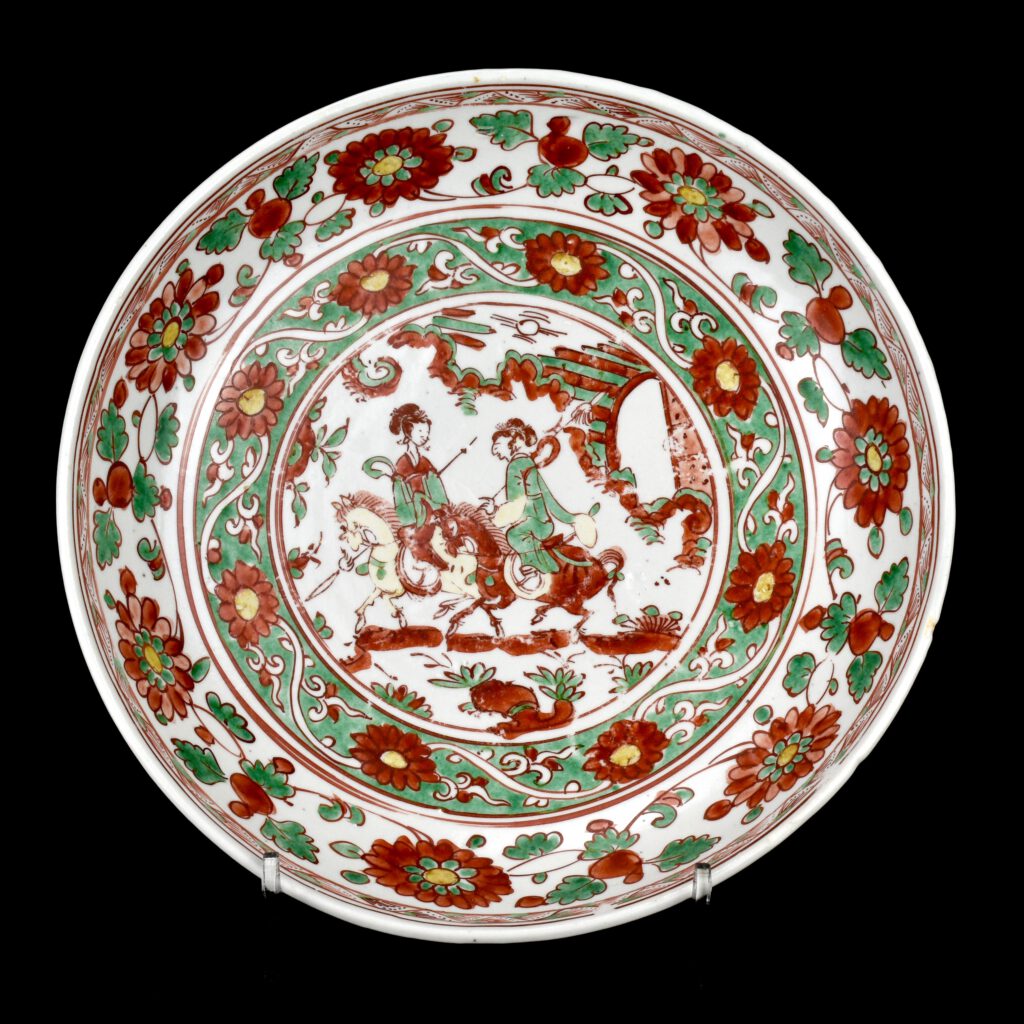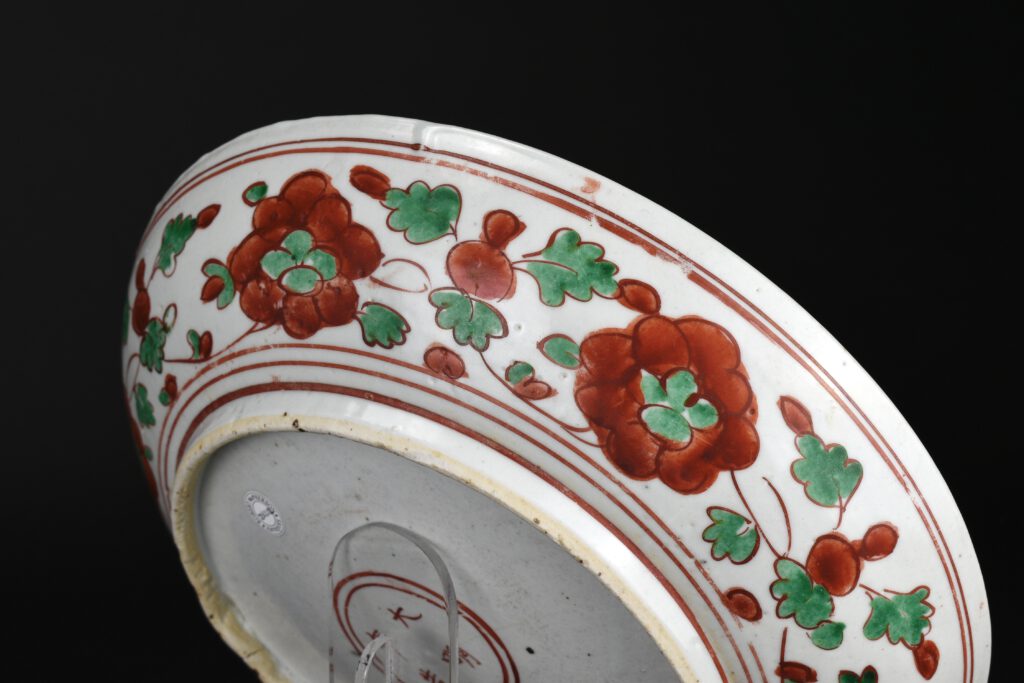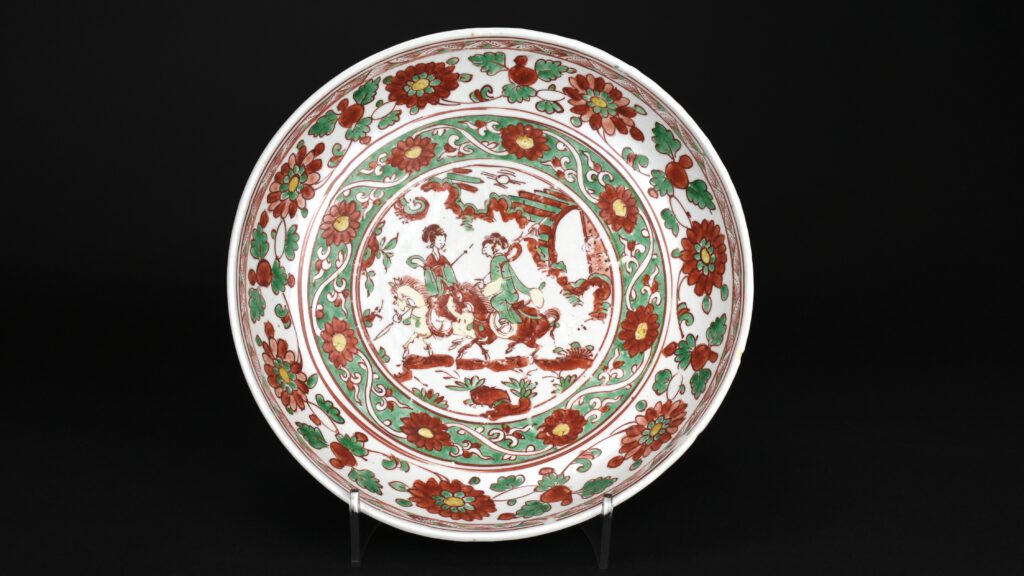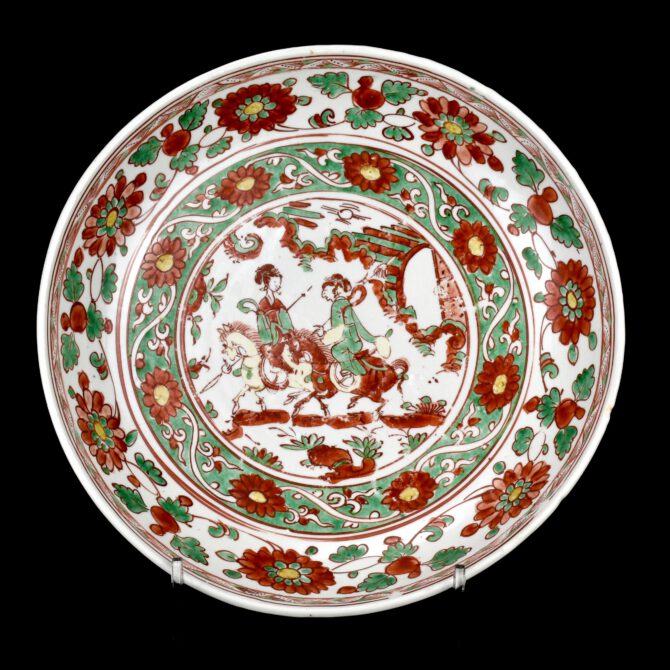
A Rare 16th Century Ming Porcelain Dish
A Fine and Rare Enamel Decorated Ming Porcelain Dish, Zhengde (1505-1521) or Jiajing (1522-1566). Made at a kiln in Nanchuan, which might be the town in Sichuan Province, or in Jingdezhen, Jiangxi Province. Nearly all of the dishes of this type are attributed to the main ceramic kilns of China, Jingdezhen. However, a related dish in the British Museum (see references) is inscribed with a four character mark on the base which reads as Nan chuan zhi zao (Made in Nanchuan) there is more than one town of this name in China. The decoration on the present example is of bright vibrant overglaze enamels; green, two tonnes of iron-red and two tonnes of yellow. The central scene is of two women, one armed with a halberd and the other a spear. They appear to be in conversation as the ride on horseback, on the other side of a line of clouds is an archway with an open door, perhaps they are leaving a walled town. The painting is quick and lively, the brushstrokes coney movement well. In some places the painters finger-marks are visible on the painting, the painter touched the enamel when it was wet, in some cases transferring the colour elsewhere. This unusual scene is framed by two bands concentric scrolling flowers. A further scrolling flower border is on the reverse. The base has a four character mark, this can be translated as ‘Made in the Great Ming Dynasty. The enamel palette employed on this Ming dish doesn’t have a clear classification as far as I am aware. According to Eva Ströber (Ming, Porcelain For a Globalised Trade by Eva Ströber, Arnoldsche Art Publishers 2013. ISBN 978-3-89790-389-0), this type is of decoration was known as “Red shops” in the ceramic center of Jingdezhen. It appears to have been made for export as well as for the mainland Chinese market. Despite the very large number of Ming porcelain objects being held in the Topkapi Saray Museum in Istanbul, few pieces of this type of enamel decoration are represented in the collection. A few examples are shown in : Chinese Ceramics in the Topkapi Saray Museum Istanbul, A Complete Catalogue, Volume II, Yuan and Ming Dynasty Porcelain (Regina Krahl, Published in association with the Directorate of the Topkapi Saray Museum by Sotheby`s Publications 1986) page 571 and 571, dated late 15th to early 16th century.
SOLD
- Condition
- There is a large but fine star-crack to the back. It does show from the front but it is very difficult to see. There is a firing fault to the rim, the thick glaze hasn't adhered to a tiny area, so it is unglazed and looks pale brown. There is a tiny glaze chip to the rim. The foot is uneven in one place. Minor wear.
- Size
- Diameter 31 cm (12 1/4 inches)
- Provenance
- N/A
- Stock number
- 26212
- References
- A related dish but with somewhat cruder painting is in the British Museum. See ; Catalogue of Late Yuan and Ming Ceramics in the British Museum (Jessica Harrison-Hall.The British Museum Press, 2001. ISBN 0-7141-1488-X.) page 258, item 9:102. It is inscribed with a four character mark on the base which reads as Nan chuan zhi zao (Made in Nanchuan). A more closely related dish with three male figures on a terrace next to a pavilion in the Princessehof in Leeuwarden (Netherlands), see : Ming, Porcelain For a Globalised Trade (Eva Ströber, Arnoldsche Art Publishers 2013. ISBN 978-3-89790-389-0) page 170, item 66, it has been dated to c.1550.Examples of this type of enamel decoration are published in A few examples are shown in : Chinese Ceramics in the Topkapi Saray Museum Istanbul, A Complete Catalogue, Volume II, Yuan and Ming Dynasty Porcelain (Regina Krahl, Published in association with the Directorate of the Topkapi Saray Museum by Sotheby`s Publications 1986) page 571 and 571, dated late 15th to early 16th century.
